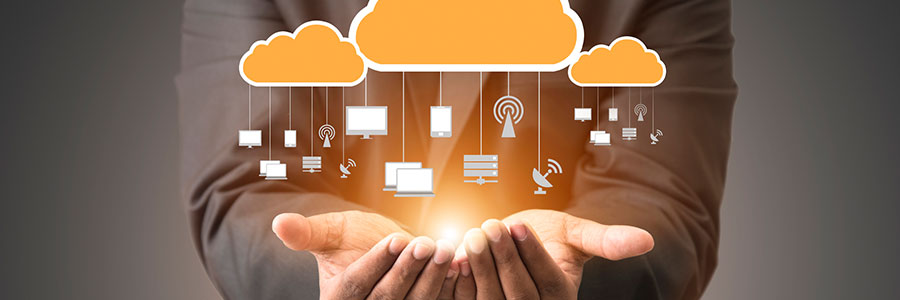Cloud computing has quickly become an industry-standard IT solution for businesses in Tampa, Chicago, and all over the country. With its scalable on-demand computing resources and flexible delivery models, cloud computing offers companies of all sizes the opportunity to accelerate their digital transformation journey like they never have before. But its impact doesn’t stop there. The cloud’s future promises even more profound changes and could reshape not just IT infrastructures, but also the way many companies operate.
What does the future look like for cloud computing?
Businesses can expect the following cloud developments in the near future.
Soaring cloud adoption rates
The cloud offers numerous advantages, from cost savings to scalability and agility, so it’s no surprise that cloud usage has skyrocketed over the past few years. According to a Gartner forecast, public cloud services spending is expected to reach $597.3 billion worldwide in 2023, which is over 21% higher than in 2022.
Cloud computing is so popular that many companies adopt a cloud-first IT strategy, where they look at the cloud as a primary host for their applications, data, and services before considering on-premises solutions. In fact, there are cloud services for almost every IT need, from core infrastructure services such as computing and storage to feature-rich Software-as-a-Service applications such as Microsoft 365. The number of cloud-based services available is only likely to grow with time.
Plus, as more businesses enter the scene, they’ll undoubtedly look to use cloud services to help them quickly build out their operations and stay competitive.
The rise of multi-cloud environments
While many companies rely on a single cloud platform, there’s growing interest in multi-cloud environments. These environments allow organizations to mix and match different cloud services from multiple vendors, enabling them to choose the provider, features, and pricing models that best fit their unique requirements.
For instance, one business may rely on one platform for its app hosting and another for data storage. This approach allows them to benefit from the strengths of different vendors while avoiding vendor lock-in. If a company’s current cloud vendor suddenly raises their prices or becomes unreliable, the business can easily switch to another one.
Moreover, multi-cloud environments minimize downtime since companies can quickly switch to another service in case of an outage from one cloud service. A distributed cloud infrastructure is also more secure than relying on a single provider because data is stored in separate locations and can be more easily monitored for threats. So if a security breach occurs in one cloud platform, the other ones are unaffected.
Serverless computing
Serverless computing allows companies to develop and run applications without having their own physical in-house servers. This eliminates the need for dedicated IT personnel and upfront investments in hardware, enabling developers to release apps to market much faster.
Serverless computing follows a pay-per-usage model in which companies pay only for the resources used by their applications. This makes it ideal for organizations with unpredictable workloads, such as websites and mobile apps that experience sudden traffic or usage spikes.
The future of the cloud is likely to move toward serverless models, as demand for flexible, high-performance applications grows.
Artificial intelligence (AI) and the cloud
AI is another technology that’s already reshaping the cloud and could have an even bigger impact in the future. AI can help businesses automate mundane tasks, optimize their processes, improve customer service, and gain valuable insights from data.
Cloud platforms like Microsoft Azure, AWS, and Google Cloud already provide comprehensive AI tools for organizations to develop customized solutions. However, the real value of AI comes from its ability to analyze data stored in the cloud and provide actionable insights. This could revolutionize how businesses operate, as they can quickly identify trends and adjust their strategies on the fly with AI-driven data analysis.
Internet of Things (IoT)
IoT typically refers to devices with sensors and built-in software that enable them to connect to a network. These devices can gather and share data amongst themselves and with central management systems over the internet. Examples of IoT devices include smartphones, smart thermostats, and self-driving cars.
Within the context of cloud computing, IoT will play an integral role since it needs a central platform to store and process data. The cloud is already enabling organizations to collect and analyze IoT data from multiple sources in real time, allowing them to gain valuable insights into customer behaviors and preferences.
As smart devices become even more widespread, more companies will likely rely on large-scale cloud storage services to store and process the massive amounts of data generated by these devices. Demand for cloud-based analytics services will also skyrocket as companies and consumers want to quickly distill and understand data from their smart devices.
Software-defined networking (SDN) and cloud connectivity
SDN is a networking architecture that aims to make networks more flexible, agile, and programmable. Traditionally, network devices (routers, switches) had their control plane (responsible for determining how data packets should be forwarded) tightly coupled with their data plane (responsible for actually forwarding the data packets). SDN decouples these two planes and centralizes control in a software-based controller.
SDN promises a transformative future for the cloud. It offers unprecedented flexibility and scalability, allowing cloud providers to dynamically allocate and optimize network resources in response to changing demands, ensuring seamless performance even during surges in traffic. SDN also enhances security by enabling isolated network segments and access controls, which is crucial in multi-tenant cloud environments. It streamlines operations through automation and orchestration, facilitating rapid deployment and scaling of cloud services.
Additionally, SDN fosters cross-cloud connectivity, simplifying data exchange between different cloud providers and promoting hybrid and multi-cloud strategies. In essence, SDN is poised to make cloud computing more agile, cost-effective, and secure, driving innovation in a rapidly evolving technological landscape.
Evolving cybersecurity demands
The future of cloud computing will see an increased focus on cybersecurity as more data and critical workloads are stored in the cloud. Cloud providers and businesses alike will invest heavily in advanced security measures, including but not limited to zero trust architecture, advanced encryption techniques, threat detection and response systems, and compliance frameworks.
As cyberthreats become more sophisticated, the cloud’s cybersecurity posture will evolve to provide robust protection for sensitive data and applications. AI, in particular, is being used together with traditional cybersecurity measures to help providers detect and respond to threats, making the cloud a safer environment for businesses.
Related reading: Learn the crucial elements of an effective cloud security policy
Prepare for the cloud’s future
To stay on the bleeding edge of cloud computing, it’s important to invest in the right expertise. Companies should partner with reliable and experienced cloud service providers that keep up with the latest trends and technologies. This way, companies can ensure their cloud infrastructure remains secure, reliable, and agile in an ever-changing digital landscape.
Dynamic Solutions Group provides a wide range of cloud computing services and solutions, from strategy development to implementation and maintenance. Our team of expert engineers is constantly innovating to make sure our clients stay ahead of the curve and get the most out of their cloud investments. Contact us today to learn more about our comprehensive cloud offerings.






